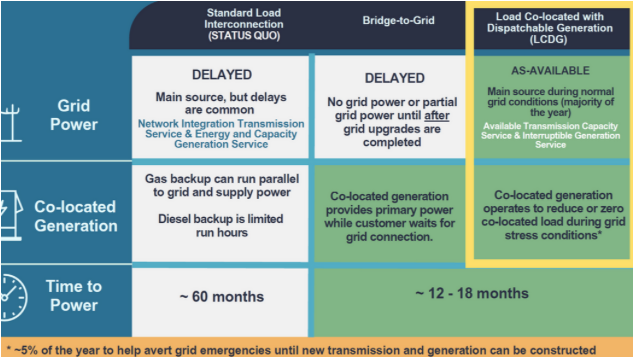[datacenter_tag_image]


In early June 2025, the Federal Energy Regulatory Commission hosted a technical conference to dive into the challenges of resource adequacy (RA) across regional markets. This timely discussion was undoubtedly prompted by the nation’s rising demand for reliable electricity, challenged further by the rapid growth of data centers at the forefront of the AI race.
RA planning is a forward-looking reliability exercise to ensure that there is enough available generation capacity to meet future demand. These plans are specifically designed to address the few critical hours when demand peaks and the risk of supply shortfalls is highest, such as during extreme summer heat or winter cold.
Current RA designs are failing to keep pace with economic changes, resulting in a vicious cycle of supply scarcity and delayed interconnections for new loads. These issues are further compounded by transmission bottlenecks, which add complexity, delay, and cost to already strained infrastructure planning. The signals are clear—markets need to find a new way forward with a single, more flexible framework that enables faster load connections without compromising grid reliability.
The answer might be simpler than you think: in exchange for immediate interconnection, new loads must commit to utilize the grid only during the hours of the year when it has capacity to spare. When grid capacity is not available, the load will follow the grid operator’s instructions to dispatch their own onsite generation or batteries and be self-reliant. This way, the new load can function without interruption while preserving grid reliability.
This concept necessitates a more dynamic approach to grid planning and real-time operations. Today, most loads are planned as “firm,” requiring the grid to be sized and constructed with the capability to meet demand on a 24/7 continuous basis. This means that a single grid constraint can bottleneck the customer’s connection, requiring costly and lengthy grid upgrades to safely manage the new firm service.
The estimated 3-to-10-year timelines to upgrade grid infrastructure and add new generation to accommodate new firm loads will drive customers to seek out other regions, potentially even internationally. For customers prioritizing speed, connecting their loads on a non-firm, interruptible, or “as-available” basis can be a valuable option. A provisional, non-firm service allows the customer to receive immediate grid service for most hours of the year, removing the pressure of long wait times for firm service. This grid “flexibility” option as a condition of load interconnection offers a pragmatic solution that expedites service while providing utilities and the markets the necessary time for infrastructure development.
Momentum is building for flexible load integration, as regulators, grid operators, and utilities across the country are embracing non-firm service arrangements. Senate Bill 6 in Texas, for example, recognizes the need for new loads to provide flexibility to the grid. In the Midwest and Mid-Atlantic, Southwest Power Pool and PJM Interconnection are both fast-tracking new processes to reliably connect large loads with non-firm service. These efforts are guided by the need for flexibility, as both approaches envision near-immediate load interconnection in exchange for non-firm transmission service and options to study paired generation in an accelerated manner. Utilities are also introducing new retail tariffs to accommodate large load interconnections that include onsite generation or interruptibility. EPRI’s DCFlex Initiative reflects growing industry consensus that large flexible loads are no longer just a concept; they are fast becoming an essential grid planning tool.
Bipartisan support is also growing at the federal level. A bill passed out of the U.S. House Appropriations Committee directs the U.S. Department of Energy (DOE) to assess how large, energy-intensive facilities such as data centers can contribute to grid flexibility through demand-side strategies. This signals a growing recognition that the scale and responsiveness of these loads are essential for grid reliability. Policymakers are clearly shifting their perspective on data centers, recognizing that advanced applications of onsite generation, demand response, and even data centers’ own ability to control power use can enable these loads to become a new resource for real-time grid balancing. This underscores what many in the industry already know: large loads are no longer just consumers of energy; they’re part of the solution.
The current firm service model is proving to be a chokepoint for customers that need speed to begin their operations. This rigid approach forces a dilemma: either stall critical economic development by delaying connections or risk grid instability due to insufficient supply.
Creating a more dynamic, non-firm service option for new loads enables immediate grid integration, temporarily transferring the grid’s supply risk to load customers that are willing and prepared to manage it themselves. Amidst ongoing RA procurement discussions, a new pathway allowing customers to connect loads without immediately increasing RA requirements while boosting the utilization of existing grid infrastructure is crucial for future grid flexibility and reliability.
This article was originally published on LinkedIn.